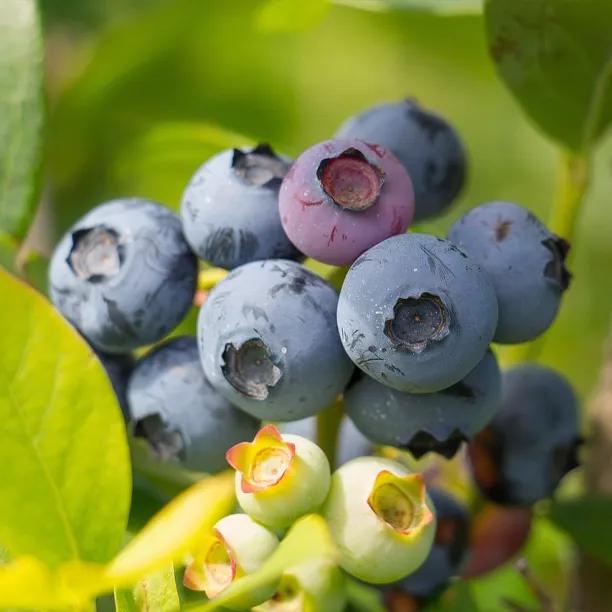Draper Blueberry Plants
The details
- Size: to 1.5m
- Fruit: large, purple
- Taste: sweet
- Use: mainly eating fresh, decent for cooking
- Picking: end July-mid Aug
- Freezes & travels well
- Self-fertile
- Spacing 1.5m
Recommended extras
Description
Draper Blueberry Plants, Vaccinum corymbosum
Firm and long-lasting after picking (for a blueberry), these are popular at farmers markets for their size, crispness, and sweetness. Blueberries are supposed to be eaten fresh from the branch, but Draper is better than other varieties for sending off on packed lunches.
Browse our variety of blueberry plants or see our full range of soft fruit.
Features
- Size: to 1.5m
- Fruit: large, purple
- Taste: sweet
- Use: mainly eating fresh, decent for cooking
- Picking: end July-mid Aug
- Freezes & travels well
- Self-fertile
- Spacing 1.5m
Growing Draper Blueberries
Like all blueberries, it needs acid soil or a pot filled with ericaceous compost to grow well. So it's probably easier to grow blueberries in a pot if yours is about pH 5.5. Make sure the soil moist and free draining, too. In terms of aftercare, net your plants as the fruits develop and ripen, or the birds will have them all. If you're growing in pots, water using rainwater, not tap, or this can affect the pH of the soil.
This blueberry variety is partially self fertile, although planting more than one bush will increase the berries your plants produce, so buy a couple and plant in pots, or 1.5m apart.
Harvest – from August to September – by pulling gently on the berries; when they're ripe they'll come away easily from the plant.
Pruning is simply a matter of removing any dead, diseased or damaged branches back to the base. You can do this at any time, but maybe best after fruiting to avoid any damage to the berries.
In your garden
Blueberries, even self-fertile ones, fruit best when pollinated by other blueberry varieties, so growing at least three types in one location is recommended.
Did you know?
Bred by Dr. Darlene Draper from Duke.
Planting Instructions
How to plant Draper blueberries
Choose a spot with as much light as possible. Improve the soil from the hole by removing roots, weeds, large stones and other rubbish and mixing in about 25% by volume of well-rotted compost or manure.
Position your blueberry so its roots are spread out, wet them and sprinkle them with Rootgrow mycorrhizal fungi.
Then backfill the hole with mixed soil and ericaceous compost, firming it gently as you go. Water in thoroughly.
Read more about how to plant blueberries in the open ground here and in pots here.

